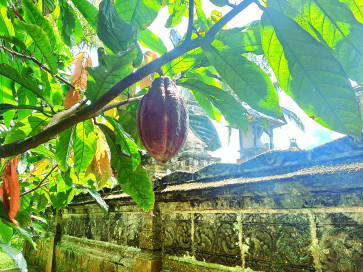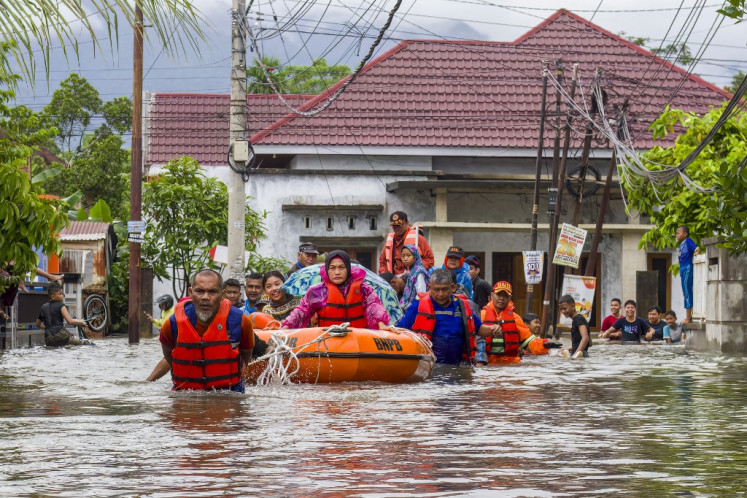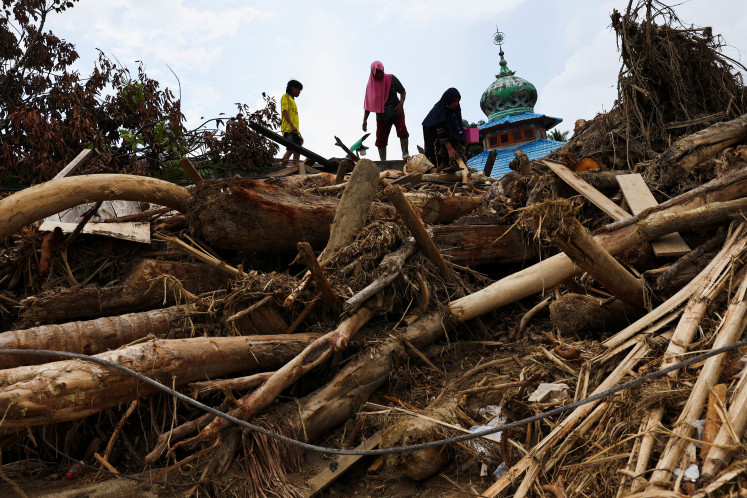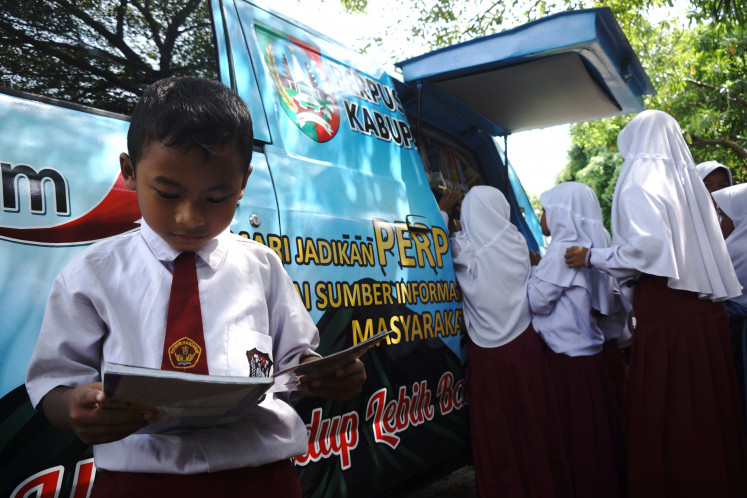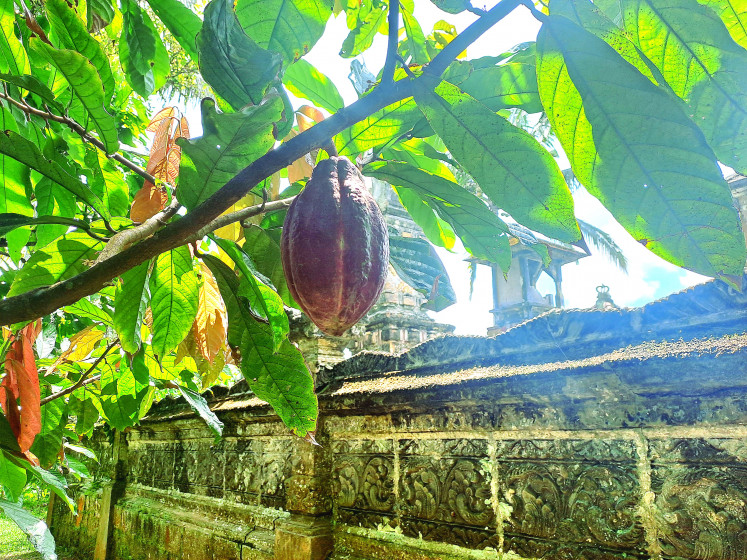Popular Reads
Top Results
Can't find what you're looking for?
View all search resultsPopular Reads
Top Results
Can't find what you're looking for?
View all search resultsFormulating digital transformation models amid Indonesia's agricultural diversity
Disruptive technological innovations cannot necessarily be adopted for Indonesia's very diverse and complex agricultural conditions.
Change text size
Gift Premium Articles
to Anyone
I
n the last two decades, various developments in disruptive innovation have changed the landscape of world agricultural development. The special edition in September 2017 of National Geographic reported that the Netherlands, a small country in Europe with very little agricultural land, has become a giant global food exporter.
In 2022, the Netherland became the third-largest exporter of agricultural products with US$11.9 billion, after the United States as the largest with $19.17 billion and Brazil in second place with $13.64 billion.
It is very interesting to compare the US and the Netherlands in terms of food production capacity. Total agricultural land area in the Netherlands is only 18,948 square kilometers, while the total agricultural land area in the US is 4.1 million sq. km. The agricultural area in the US is 217 times that of the Netherlands.
The big question is how did this happen? The Netherlands has built various agricultural innovations based on Technology 4.0 such as application systems, networks, mechanization combined with automation and artificial intelligence which are capable of producing various agricultural-related products efficiently and have very large production capacities. Apart from that, it is also supported by excellent and creative human resource capacity so that it is able to encourage more efficient agricultural related production with a high level of productivity.
The application of Technology 4.0 undermines the classical theory of agricultural production, which assumes that the determining factor for agricultural production is the abundance of natural resources, especially the area of agricultural land. The Netherlands has proven that with a small agricultural land area, but with the use of various innovations and new technologies, it is able to produce agricultural products in much larger quantities than countries that have much larger agricultural land areas.
But even though many facts show that globally disruptive innovations based on Technology 4.0 have shown very significant success, these innovations cannot necessarily be adopted for Indonesia's very diverse and complex agricultural conditions.
National agricultural conditions are very diverse with the Agricultural Census in 2023 reporting that the number of Indonesian agricultural households was still very large at 28.4 million. The regional distribution is very wide, the quality and quantity of resources and of agricultural infrastructure are very different. In addition, there is a high diversity in terms of human resource capacity of agricultural business actors and variations in access to agricultural information and technology.
Application-based modern agriculture through Technology 4.0 has begun to be developed by agro-corporations and hundreds or thousands of progressive young individual farmers in the last few years. Agricultural production has become very efficient and productive with less use of natural resources, for example through the application of sensor systems for monitoring fertilizer, water and pest attacks, as well as the use of greenhouses and photosynthetic lighting systems which enable production not to depend on the seasons and the availability of direct sunlight. After harvest, agro products are promoted and marketed online through various complex and simple application systems so that producers can find business partners quickly and get better product prices. In addition, the logistics system for agricultural products is also very developed.
On the other hand, there are still many farmers who implement traditional, small-scale farming that is relatively resource-intensive with a subsistence orientation. Some farmers still practice shifting cultivation. In fact, there are still people who have not practiced agricultural cultivation, they still mix agricultural products from resources available in nature or forests.
The application of Technology 4.0 in the agricultural sector has great potential and is capable of increasing production efficiency and effectiveness. Digitizing information on various aspects of the agricultural sector as a form of disruptive innovation through the use of the internet and application systems can support agricultural businesses, which have the potential to improve the livelihoods of farming communities. Farmers can access a variety of information regarding input, machinery and tools, financing and governance; expanding interactions with strategic partners and exchanging information with various parties so that transactions to improve production and marketing of agricultural products occur.
However, the process of digital transformation in the agricultural sector through the use of Technology 4.0 is not simple because Indonesian agriculture is very complex with very high diversity. There are several fundamental problems, including low literacy in information and communication technology (ICT), limited availability of equipment and applications and the uneven distribution of electrification and telecommunications networks in rural Indonesia.
The prospects for developing an agricultural digital transformation are also in line with the development of digital technology users in Indonesia. Statistics Indonesia (BPS) recorded in 2023 that 46.84 percent of 28.19 million farmers used modern agricultural tools and machinery and digital technology. The use of agricultural machinery and modern technology includes the use of the internet/smart phones/information technology, the use of sensors, drones and/or the use of artificial intelligence for various agricultural cultivation and post-harvest processes.
Opportunities to encourage young farmers to master digital literacy in the agricultural sector are still very open. The BPS noted in 2023 that based on age categories, agricultural machinery and modern technology are mostly used by farmers over 39 years of age with a proportion of 80.24 percent. Meanwhile, the proportion of use by farmers aged 19-39 years only reached 19.72 percent and those aged under 19 years around 0.04 percent.
Prospective solutions to the problems of using the internet to support agricultural development include strengthening ICT literacy, support for quality equipment, access to financing subsidies, application improvements, guidance and monitoring of application use, provision of telecommunications infrastructure such as the construction of new base transceiver stations (BTS) and improving the electricity network in rural areas.
Considering the variety of economic capacity, socio-cultural and infrastructure availability, I suggest that the design of using the internet and various digital platforms to support agricultural development can be grouped into two models. The first model design is that farmers, individually or through groups, can access and exchange information directly with extension centers or other parties as sources of information, this concept is known as direct access. The prerequisites are relatively good education and economic capacity, good ICT literacy and sufficient telecommunications and electricity infrastructure.
Meanwhile, in the second model, farmers are facilitated by farmers’ groups or community groups in accessing ICT, this concept is known as indirect access. This condition is suitable for people with relatively poor education and economic capacity, poor public literacy regarding ICT and a lack of telecommunications and electricity infrastructure.
---
The writer is a professor of agricultural extension and communication at Gadjah Mada University in Yogyakarta. The views expressed are personal.




